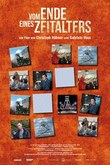Please note: this text has been already published in 2019 in german language at Freitag-Blog.
In the U.S., medical malpractice could be the third leading cause of death. Meanwhile, the number of fatal treatment errors has even increased. If this rate represented the number of air accidents, no one would take a step inside an aircraft. However, the opposite is true and there are evidence-based reasons.
Martin Egerth strolls out of the Lufthansa Aviation Training Center at Frankfurt Airport on this sunny autumn day. The sun shines into halls where cockpit simulators on large stilts sway towards a safe landing. For the native Tyrolean, the heat on this day is a horror. Between the gold-striped dignitaries of the air, he looks rather inconspicuous in a grey sweater. But the psychologist saves lives. And in a very indirect way: He trains doctors using methods that pilots use to safely fly thousands of people around the globe. With success: With only 182 fatalities (ICAO Safety Report 2017), 2016 was the safest year ever for commercial aviation. Because what is only slowly ‘budding’ in medicine, has been known in aviation for decades: Humans make mistakes and are in over 80% of cases the cause of all accidents. Most mistakes in medicine are due to poor communication, estimates the World Health Organization (WHO). In 2008, they launched the ‘Safe Surgery Save Lives’ project. Large hospital chains actively started introducing checklists for high-risk situations. Human Factors is the buzzword. It is essential to analyse humans and assess their behaviour, their reactions in critical situations and to draw conclusions for daily operations. Whether it be the strict processing of checklists or trained interactions between pilots, it has all been the result of daily operations for decades.
Fifteen years ago, the clock for patient safety had already stricken the eleventh hour, sasy the clearly affected Egerth agitatedly. "I'm in a clinic, and they boast of having increased their own hygiene quota from 45% to 65%. That can't be true! I would never seek treatment in such a clinic!” he almost screeches, while every few minutes a plane whooshes over the building. "Imagine if our pilots only followed the procedures in 65% of all cases – nobody would fly with us. In medicine, too, we are experiencing a change towards transparency concerning quality issues. Portals on the Internet make it possible for potential patients to compare." Those who have the money, the time and the cognitive resources take a close look at those to whom they would entrust their health.
Who makes no mistakes, makes nothing, as the old saying goes. But this does not benefit damaged patients. The implications for themselves and their loved ones are too relevant to rely on old sayings. The AOK's 2014 Hospital Report revealed that in 5-10% of all hospital treatments, an adverse event, such as an allergic reaction to a drug, occurs. Half of these events are considered preventable. Actual errors constitute one percent, fatal events one per thousand of all hospital cases. "Important, but often neglected, is above all the influence that a corresponding error culture in the hospital has on patient safety. Employees must be made even more aware of the topic and the error reporting systems already in place must be put to better use to help them learn from their own mistakes and the mistakes made by other hospitals", says Prof. Geraedts of Witten/Herdecke University and co-editor of the Hospital Report.
The German Society for Orthopaedics and Trauma Surgery (DGOU) got the programme rolling. They reached out to Lufthansa to ask them to train their staff and increase patient safety. Today, the pilots and doctors jointly train the majority of the employees of all ‘Berufsgenossenschaft’* clinics (BG clinics). This has resulted in a training programme, which is now scientifically accompanied and is bound to make its way into the textbooks of human medicine. As product manager, Egerth is responsible for Human Factors Trainings for all target groups. "In this way, I can strategically advance what has resulted from the DGOU's request. Meanwhile, we are cooperating with all BG clinics."
In addition to the classic training of pilots and cabin crews from all over the world, Lufthansa is increasingly penetrating the soft skills training market using its concepts of standardized processing principles and recognition of the fragility of human decision-making. They now market their own everyday work at altitude zero. The motivation for commissioning such trainings, on the other hand, varies. Some clinic directors believe that it is enough to train only the executives. Experience, however, has shown that this is not enough to change the interaction of all team members. The nursing staff are often forgotten, the recognition of the team performance is reduced to one person. "After the operation, the surgeon pats himself on the back and praises himself exclusively, instead of praising the entire team," complains the long-serving ‘Lufthanseat’. The nursing staff often do not even have the slightest chance of intervening in visibly wrong processes. Without veto rules, without a culture of intervention, competent nursing staff are relegated to the silent places. In the end, there is only one person suffers - the patient.
The big difference between aviation and medicine is one's own participation. Another reason why pilots are committed to designing the greatest possible safety is that they themselves are in the proverbial boat. Within the medical profession, this is different. The effects of the active and passive mistakes a doctor makes, he often does not even notice in the further course of treatment of the patient. The larger the hospital, the more likely it is for this condition to occur. Moreover, without feedback, there is no reflection. And thus, no change in behaviour. It is a dangerous spiral. The ability to report and evaluate critical events is often very low compared to aviation. The art of healing is in the infancy of modern improvement processes.
In the cockpit of a Lufthansa aircraft, the crews know each other by sight at best. There is constant staff rotation and this is expressly desired. No arbitrary routines, too strong hierarchies and dependencies can be established that would potentially favour risky situations. Here, too, medicine insists on the old caste of the boss and his disciples. "The medical system probably lives to some extent from maintaining these repressive hierarchies," Egerth speculates. How ‘popular’ doctors are who recognise the risk posed by stressed and overworked physicians was shown by a case in Thuringia. There, a chief physician was bid farewell by his colleagues for his commitment in a way that unintentionally caused media coverage. Instead of a bunch of flowers, on the occasion of his clinic change, he received a derisive ad in the local newspaper. He was progressively committed to patient safety and checklists. The hatred of the employees was a certain outcome.
For many members of the healing professions, criticism of their own actions is tantamount to lèse-majesté. Society contributes the rest in overestimation of medical skills. In the eyes of the general public, a doctor is an all-rounder who is always ready for action, informed about all specialties, never tired and with an error rate equal to zero. "When I ask chief physicians why they fly with Lufthansa, everyone always answers, because of the well-known safety standards. In return, they don't like to be asked the question about their own standards." The creation of checklists and the development of standard operating procedures, or SOPs for short, are often regarded as the task of lower hierarchies. Obtusely putting together supposedly correct courses of action is by no means a checklist and it by no means contributes to an increase in patient safety.
The Helios Clinic Group introduced checklists in the field of anaesthesia for the first time in 2009. Not to great applause from the employees, the establishment proved to be tough. The aim was and is the increase of patient safety. "Based on the number of a hospital’s liability cases, functioning processes can be clearly identified," says ‘Lufthanseat’ Egerth. If insurers can be shown on the basis of valid figures that the measures are effective, a reduction in premiums could be the result. "And this is how to get also the commercial management of a clinic on board." Because the economic pressure is quite a companion in medical circles. "Money is not readily forthcoming for trainings of this kind, although it can result in a pay-off in a relatively short time." They prefer to participate in the umpteenth cheap standard training instead.”
Meanwhile, spending as little money as possible has also become a kind of popular sport, under which the entire air traffic industry groans. "When people ask me whether a low-cost airline is safe, I answer that the passengers have a say in it. Anyone who expects to get a return flight within Europe for 30 Euros and across the Atlantic for 200 Euros need not be surprised about possible economies, despite high legal standards."
"Aviation continues to be exciting and sexy", says the psychologist. "People like to have pilots explain something to them about the world at 30,000 feet. Of course, we put this to use." The target group is not clearly defined, however. High-risk decisions take place in many areas. Including within the economy, as most people have had to realise since the financial crisis. "We also train lawyers and managers in ‘Human Factors’. The subjects are primarily empathy and leadership. The ability to lead is also a decisive criterion for Lufthansa's selection of new pilots. We do not select pilots, we find future captains. The only difference between our captains and first officers is the flying experience." This homogeneity is intended. Depending on the origin of the pilots, cooperation, hierarchy and work ethic are immensely different. "And you don’t just simply change that in one training."
The situation in German hospitals is similar to highly hierarchical cockpits. The chief physician is like a saint whom one learns to hate, but who must be flattered for one's own sake. If you don't participate, the in-house mill will grind you down at the base. Objections toward treatment decisions are a dangerous gamble for the career. Sure, exceptions confirm the rule, but the physical and psychological states of exhaustion among young German physicians speak a different language: "Some chief physicians come to me because their entire medical base threatens to break away due to chronic exhaustion. So, something is likely to go really wrong." Because unlike in the cockpit, the study of human medicine does not evaluate whether someone will be suited for the role of team leader or even chief physician. The acquisition of such competences is sometimes based on professional experience or simply talent. The staff and patients are playing life roulette. But there are also mix-ups in the trainings themselves. Human Factors Trainings are not simulation trainings. Quite the opposite: "First comes the Human Factors Training, only then an effective simulation training becomes possible”
The participants are trained by specially selected and trained pilots and physicians. Psychologist and product manager Egerth has had to work hard for his recognition in cockpit circles. His professional caste is often viewed by pilots with distance; they have a say in deciding who gets into the cockpit and who doesn't. Through many hours spent with pilots in the simulator and "being close" to the crews, the rapprochement was made possible. For him, the cockpit wouldn’t be the thing. "Everyone feared the interviews, I feared the mathematical-dimensional tests." In the medical world, on the other hand, he is still on the path of reputation. He should do his doctorate, he was advised, this would speed up his arrival in the orbit of the demigods in white. And there it is again, the problem.
Jan C. Behmann is a freelance author from Frankfurt am Main. He is the holder of an authorized department for training and further education in first aid, as well as the author of a recognized first aid textbook. He worked full-time as a paramedic in the Emergency Medical Services for several years. The author indicates that there is no conflict of interest






Was ist Ihre Meinung?
Kommentare einblendenDiskutieren Sie mit.